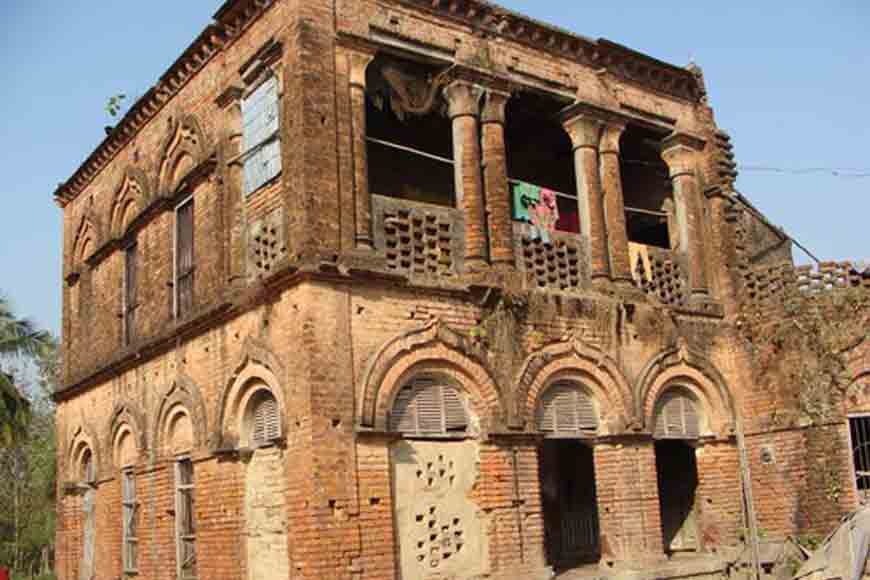A mini Kolkata in Bangladesh! Watch out!

It has been ages since Kapotaksha River lost its glory. Large steamers, launches and boats laden with heavy goods no longer ply on the river. The bank of the river is no longer frequented by businessmen and traders from distant lands and the sprawling sugar mills stand in the shadows of their past glory. Kotchandpur Upozilla in Bangladesh stands as a mute spectator, perhaps reminiscing its rich heritage. The place is steeped in history.
Kotchandpur in Jhinaidaha was once a vibrant business town and was nicknamed ‘Chhoto Kolkata’ (mini Calcutta). This sounds like a folklore to those who live there now. The sprawling buildings were crumbling and decaying with age and they have been refurbished. The narrow lanes have been widened and new business ventures have sprawled. Long ago, Kotchandpur was full of screwpine (Keya) flower gardens. During Mughal Emperor Akbar’s reign, Darvesh Sardar Chand Khan came here to spread Islam. He was struck by the virgin land and its beauty and decided to settle here with his followers. Soon, his fame spread far and wide and the place was named Chandpur in his honour. There was a time when Chandpur became a very important centre of trade and commerce, in Bengal and its fame reached far and wide. As news of Chandpur’s affluence reached Mong and Portuguese pirates and plunderers, they immediately targeted the land repeatedly and continued their loot and vandalism.
When news of the marauders reached Delhi Durbar, Jahangir assigned his brave Subedar Islam Chishti Khan to march to Chandpur and put an end to the menace posed by the foreign mercenaries. That was in 1608.After Subedar Islam Khan arrived, he immediately got a fort built around Chandpur in 1610. He also set up a court (wrongly pronounced as Kot by locals) of law so that fair trial could be meted out to all. The word ‘Kot’ soon entered the vocabulary of the masses and found its way to Chandpur and the place came to be known as Kotchandpur. Subedar Islam Khan died in 1613. Subedar Kasim Khan joined as his successor.
Between 1830 and 1847, Kotcahndpur was made into a sub-divisional town. The town managed to hold on to its elevated status till March 14, 1863 after which it was discontinued officially. The court was discontinued. Kotchandpur was the hub of business and trading. It was the main trading centre of mat-gur(a form of jaggery) with which refined sugar was manufactured. The place was renowned for production of superior quality sugar. Towards the end of the 18th century, an European entrepreneur named Bake set up a sugar manufacturing mill there. In 1842, New house bought the factory. By 1890, many sugar factories came up and business opportunities increased phenomenally. Big shipping vessels, boats, launches and steamers anchored on the banks of Kapotaksha river and traders from distant lands frequented here. Many of those buildings which functioned as sugar mills in the past, still stand as remnant of a distant, glorious past.
During its heyday, Kotchandpur was nicknamed ‘Chhoto Kolkata’ (mini Calcutta) as its volume of trade was remarkable. In 1883, the town was elevated to a municipal corporation. Mr Castle was the district magistrate at that time. His succesors include E.G. McLoyd, H.C. McLoyd, Neelranjan Roy and Hemanta Chandra Mukherjee. After Independence, Ghulam Haidar Sardar was elected the first Muslim Chairman in 1947.
Kotchandpur’s glorious past lies in historical chronicles as does its court of law. But the court (‘Kot’) building stands there majestically, though shorn of its eminence.In 1899, the court building was transformed into a secondary school. The school re-christened Kotchandpur Pilot Higher Secondary School, still functions from the same building. The structure stands in a precarious state, but is still operating.









